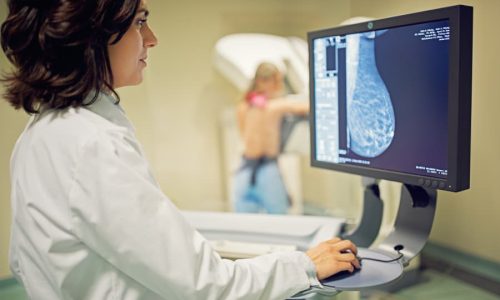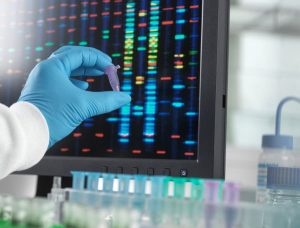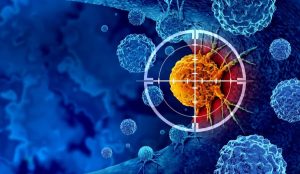
Recognizing Cancer Misinformation: Expert Insights from 2 RCCA Oncologists
“Consider the source.” It’s good advice for dealing with the sting of criticism or the allure of gossip, but two oncologists say it’s even better
HIPAA Alert: Potential Data Breach Learn More
Questions on Oncology, Hematology and/or Infusion Clinical Services due to COVID-19 Crisis – CALL 833-698-1623
Important Information for Our Patients Regarding the Coronavirus.
RCCA Providing Area Cancer Patients with Access to Care During Coronavirus Outbreak
RCCA Offering Patients Virtual Visits During Coronavirus Pandemic
Routine mammograms are an important part of breast cancer detection. Mammogram testing can detect signs of cancer long before symptoms develop, giving patients and oncologists a head start on planning treatment. If a mammogram test is abnormal, it is natural to feel concerned. Do test findings mean that the person has cancer? Most abnormal mammogram reports are not a cause for concern. Still, further testing is required to confirm that the results are benign.
Many individuals diagnosed with breast cancer turn to Regional Cancer Care Associates (RCCA) for treatment. RCCA is a group of more than 100 medical oncologists and hematologists who treat patients who have solid tumors, blood-based cancers and benign blood disorders at more than 20 locations throughout New Jersey, Connecticut, Massachusetts, and the Washington, D.C., area.
Following, we explain the next steps after an abnormal mammogram report.

It is not unusual for individuals to be recalled after an initial mammogram screening. The recall is not always due to suspicious results. There are many possible reasons for a radiologist to call the individual back, including:
Being recalled may cause someone to worry. However, fewer than 1 in 10 women are actually found to have cancer after being called back. In most cases, suspicious findings no longer look unusual under close examination. The follow-up provides certainty that the finding is benign. If so, the individual can enjoy peace of mind that they are truly cancer-free. If screening does reveal a problem, then treatment can begin as soon as possible for the best chances of success.
When discussing next steps after an abnormal mammogram, it helps to understand what the results mean. Physicians use the Breast Imaging Reporting and Data System (BI-RADS) to describe mammogram findings. Categories run from zero to six:
The findings are incomplete. Additional imaging is needed to clarify the results. The radiologist may request another mammogram with a different view, one with spot compression, or an ultrasound.
The findings are negative. The mammogram reveals nothing new or abnormal. The individual’s breasts are symmetrical with no masses, unusual tissue structures, or calcifications.
The findings are benign and non-cancerous. This may include masses, lymph nodes, or calcifications. Calcifications are calcium deposits that can be seen on mammograms but are typically too small to be felt in breast tissue. They are a byproduct of breast cell growth and division. There are two types:
Category 2 results are negative for cancer. Noting them, however, is important to inform radiologists for future mammogram screenings.
The findings are probably benign. Findings in this category have less than a two percent chance of being cancerous and are not expected to become cancerous. However, they cannot be definitively labeled benign. Prompt follow-up is required in order to conclusively rule out cancerous results. In most cases, the radiologist will suggest further imaging within six to 12 months, repeated regularly over two years, or until the finding is determined to be stable.
The findings are suspicious or abnormal. They are possibly, but not definitely, cancerous. There are three subcategories based on the estimated likelihood of cancer:
A surgical biopsy is recommended after a Category 4 finding to confirm the presence or absence of cancer. Biopsy involves removing a small amount of breast tissue for evaluation.
The findings are highly likely to be cancer. Findings look like cancer and are at least 95% likely to be cancer. A surgical biopsy is very strongly recommended.
The findings are definitely cancerous. This category is only used after the presence of cancer is proven by a biopsy. At this point, further imaging is used to monitor how the cancer responds to treatment.
If routine mammogram findings are Category 2 or higher, a follow-up appointment will be made. This typically involves another mammogram called a diagnostic mammogram. Rather than taking images of the whole breast, the radiologist will take several views of a particular part of the breast.
The radiologist may also request other types of medical imaging. Ultrasound uses sound waves to get images and may provide a better view of structures that were unclear on the mammogram. Magnetic resonance imaging (MRI) uses radio waves and magnets. MRI images are far more detailed than mammograms or ultrasounds and can detect very tiny changes in breast tissue.
If the area is still suspicious after detailed imaging, a biopsy will be performed. This procedure uses a hollow needle to take small samples of tissue from the breast. The samples are then examined under a microscope. Biopsy is the only way to be sure whether a suspicious growth is cancerous.
Additional testing is often required for women with dense breasts. This is because dense breasts are more difficult to evaluate with mammograms. They have a high composition of glandular and fibrous tissue, which can disguise abnormal growths and make mammograms more difficult to interpret. Breast density is recorded in four categories:
Dense breasts are a normal, common occurrence. Almost half of women age 40 and older have them. These women may be asked for follow-up imaging more often than others, but not because they are more likely to have cancer. This is only to ensure imaging results are clear.
Waiting for an abnormal mammogram follow-up can be unnerving. If someone feels nervous, they can speak with loved ones who have had screenings or biopsies. They can also contact a physician to learn more about breast cancer and test recommendations. Regional Cancer Care Associates educates patients to help them avoid life-threatening cancer. RCCA specialists provide care to more than 30,000 new patients and 265,000 established patients each year. RCCA physicians offer patients innovative therapies, including immunotherapies and targeted therapy, cutting-edge diagnostics as well as access to approximately 300 clinical trials in community-based centers close to home.
Why are routine mammograms important?
Routine mammograms can detect signs of cancer before an individual notices symptoms or a lump. This allows treatment to begin early, giving patients a good chance for full recovery.
Are mammograms safe?
Mammograms use only small doses of radiation. The risk of harm is very low. Repeated mammograms can increase cancer risk, however, so women should speak with their doctors about what is suitable, especially if there is a possibility of pregnancy.
How often should I get routine mammograms?
Most authorities recommend annual mammograms starting after age 40. High-risk women may begin mammograms earlier or supplement screenings with additional tests, such as MRI scans.
Does dense breast tissue increase cancer risk?
Dense breasts do slightly increase a person’s risk of developing cancer. They also make it harder to read mammograms.
For more information or to schedule an appointment,
call 844-346-7222. You can also schedule an appointment by calling the RCCA location nearest you.

“Consider the source.” It’s good advice for dealing with the sting of criticism or the allure of gossip, but two oncologists say it’s even better

Biomarker testing is the evaluation of samples of a patient’s tumor, blood, or both to identify the genetic mutations responsible for the development of cancer,

Medical research has made tremendous strides in improving how oncologists understand and treat cancer. One of the most exciting developments is the use of radiopharmaceuticals.

Regional Cancer Care Associates is one of fewer than 200 medical practices in the country selected to participate in the Oncology Care Model (OCM); a recent Medicare initiative aimed at improving care coordination and access to and quality of care for Medicare beneficiaries undergoing chemotherapy treatment.